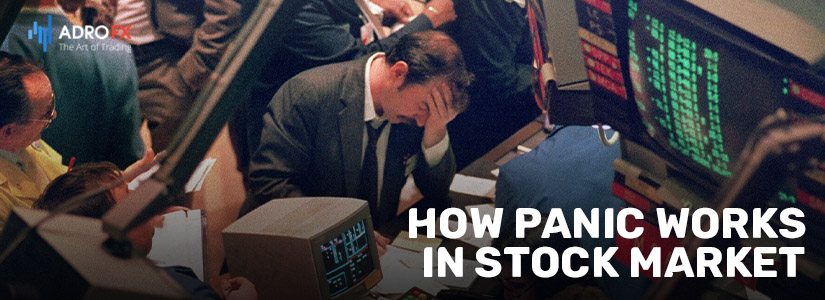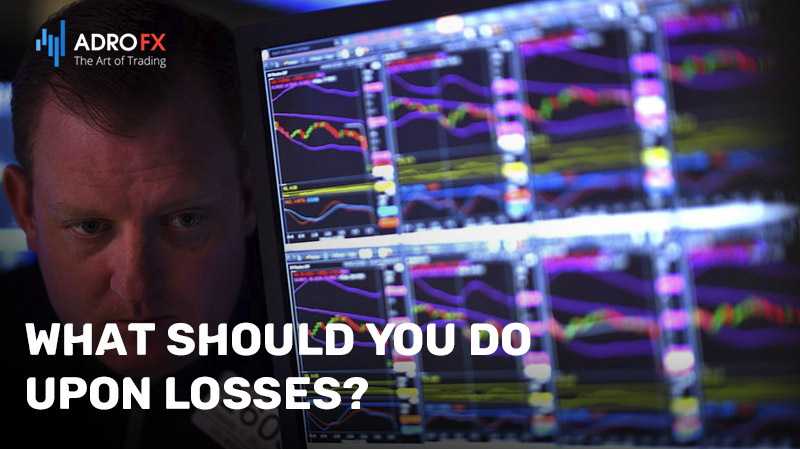How Panic Works in Stock Markets and How to Deal With It

We can recall dozens of examples of panics in the markets when in a few trading days with a loud chuckle whole states went into the mire of market volatility. In addition to recent events, these include, for example, the March 2020 panic sell-offs.
Most of these events will only be remembered by encyclopedias, but some remain on the radar, usually with the epithet "black." For example, the Black Mondays of 1929 and 1987 in the U.S. stock market.
Every time the passions subside a bit and markets return to growth, we are asked to describe the causes of market panics. It is difficult to be objective, being a direct participant in recent events, but let us risk summarizing the experience of the markets over the past decade and a half.
Despite the fact that the reasons for each of the volatility outbursts are different, we can assume that the reasons for such panic behavior of market participants should be sought in the behavioral patterns and properties of group dynamics.
One Panicker is Enough
Canadian clinical psychologist Jordan Peterson notes that herd behavior, when confronted with danger, is related to the peculiarity of reaction to risk and is characteristic of most large groups-not just people, by the way.
Indeed, let's look at the scales that determine your reaction when you face the danger of unknown character and magnitude. On the one hand, you can ignore this danger and continue to live your life as before. The disadvantages of such a choice are obvious. If there is a tiger behind the moving branch you are likely to be eaten. But you will be calm till the very last minute.
On the other hand, you can be reassured and yank away from that strange branch. This will bring you a little discomfort, but the would-be tiger will finish off your less-than-competent tribesman. Even if the predator is only behind every thousandth tree-that is, the very fact of the encounter is highly unlikely.
Note, in parenthesis, that the principle of "a small premium in exchange for relief from an unlikely but big trouble" is at the core of modern insurance companies business. From the fact that insurance companies still exist, and some of them even survive, we can draw the preliminary conclusion that the human psyche and decision-making modus operandi have not changed much since the days when forest predators posed a real danger.

The next phase of our defense mechanism consists in reacting to the irregular behavior of those around us. That is, we don't even need a moving branch; another individual who acts as if the danger is real will suffice. "He ran for some reason," the psyche resonates and adds: – Well, what would it take for you to run, too? What if he's running from a tiger?"
The result is that guided by that very first runner, everyone runs – because the costs of the panic reaction are, on average, much lower than even the unlikely but real danger.
It is easy to transfer this behavioral pattern from the jungle to the stock market. Let's multiply our psyche's predisposition to overreaction to imaginary danger by the general anxiety inherent in modern man. Let's add newswires, whose entire business is built around screaming headlines.
As a result, we get that hyper-anxiety of even one not-very-big market player can provoke a large-scale sale, and then – down the slope of the market panic, which involves more and more sellers.
Remember the monologue that different parts of your brain broadcast to you at the sight of a sudden runaway comrade? The arguments of the risk-management departments on the investment committees of the "big houses" differ only in the pseudo-mathematical calculations with which their highbrow reports are littered. Behind all this vanity fair is the usual argument, one that would also be understandable to our running caveman acquaintance: we have to react to news reports.
There will always be market panics, because the evolutionary mechanisms for reacting to danger, sewn into the human brain, are older than not only the stock market but apparently even that potential bush tiger, not to mention the higher primates.
So the only proper response to such sell-offs is calmness and a clear realization that the time to pick up the stones will surely come too, even though at the moment all around is just throwing them around.
What Should You Do Upon Losses?
The test of a loss is a test of your stress tolerance: how well you handle your emotions and how disciplined you are. Here are practical tips to help you develop an effective exit strategy.
- Stop Losses. Limit your losses in advance with Stop Losses. This is especially useful for short and medium-term traders.
- Hedge. Use futures and options to hedge your losses.
- Look for new opportunities. There may be assets in the market that are falling harder than the market. If fundamental events do not affect securities in the long term, they are worth considering buying.
- Stay calm and disciplined. Often our fears come at a time of peak panic, and recovery is just as much encouraged - and also forces us to act on emotions, this time positive ones. In practice, and in this situation, it is best to keep your head cool to guard against mistakes and the "giddiness of success".
- If you can't stand it, choose another asset. If significant drawdowns in stocks cause excessive negative emotions, then simply change the strategy. Reduce portfolio risks by choosing more conservative instruments, whether bonds or exchange-traded funds.
- Don't jump to conclusions and don't make rash decisions.
Think through a strategy in advance in the event of a market panic: remember about diversification, use Stop Loss orders, and hedge positions. What exactly to do in case of an unforeseen situation is better to be determined by the situation itself.
Try to take control of your thoughts and emotions that arise during a market decline. Rational thinking is your competitive advantage and can help you find undervalued assets and make good deals while panic reigns around you. Sometimes a strong and emotional drop in the stock market on margin calls is one of the best times to open long positions.
Summary
In conclusion, market panics are inevitable and are driven by behavioral patterns and group dynamics. The evolutionary mechanisms for reacting to the danger that is sewn into the human brain are older than the stock market itself, making it difficult for individuals to avoid succumbing to panic. However, it is crucial to remain calm and disciplined during times of market volatility. Practical tips such as using stop losses, hedging, and looking for new opportunities can help individuals develop effective exit strategies. If the emotions of significant drawdowns become too much to handle, it may be necessary to reduce portfolio risks by choosing more conservative instruments. Ultimately, the key to avoiding panic in the stock market is to remain level-headed and to have a clear understanding that the time to pick up the stones will come.
About AdroFx
Established in 2018, AdroFx is known for its high technology and its ability to deliver high-quality brokerage services in more than 200 countries around the world. AdroFx makes every effort to keep its customers satisfied and to meet all the trading needs of any trader. With the five types of trading accounts, we have all it takes to fit any traders` needs and styles. The company provides access to 115+ trading instruments, including currencies, metals, stocks, and cryptocurrencies, which make it possible to make the most out of trading on the financial markets. Considering all the above, AdroFx is the perfect variant for anyone who doesn't settle for less than the best.










